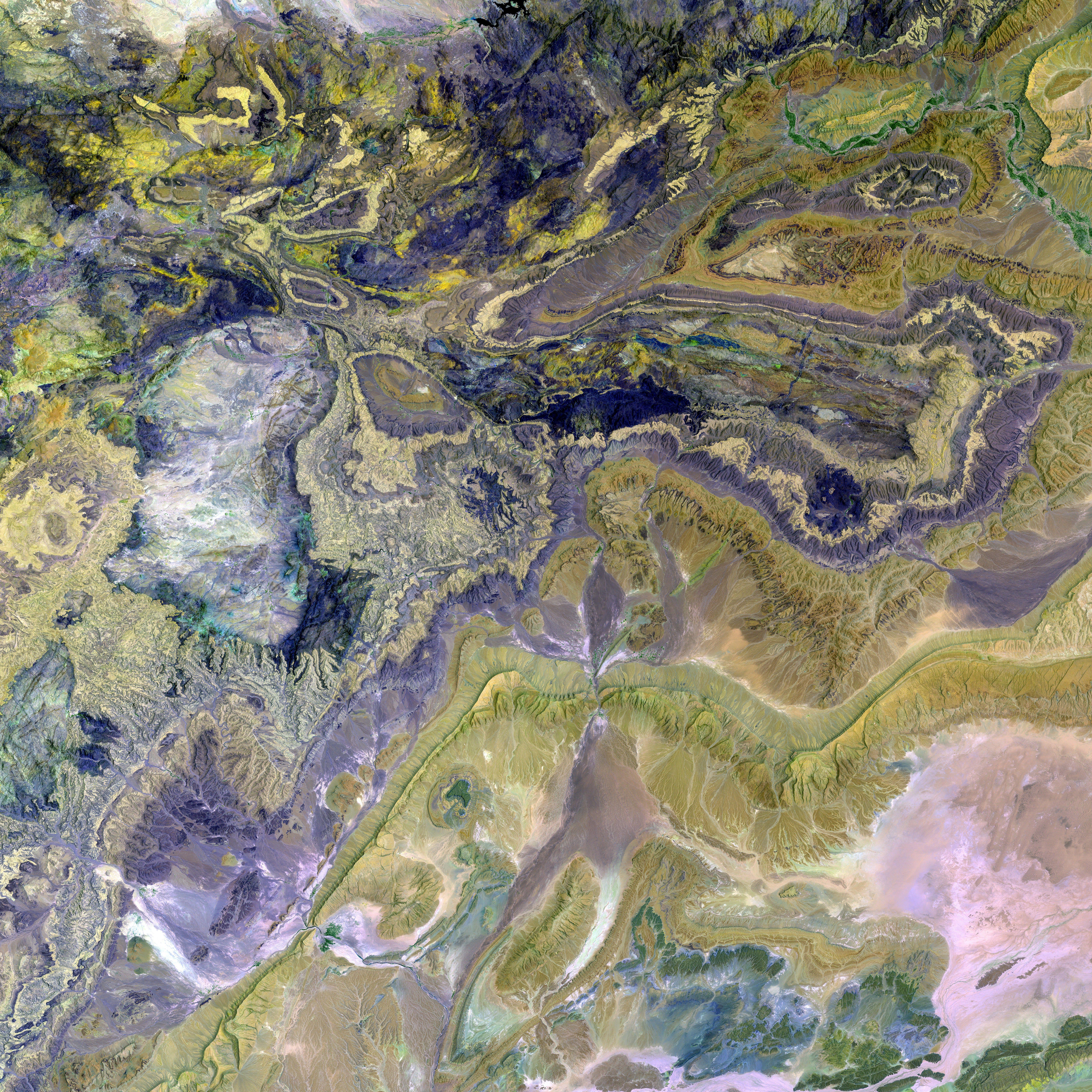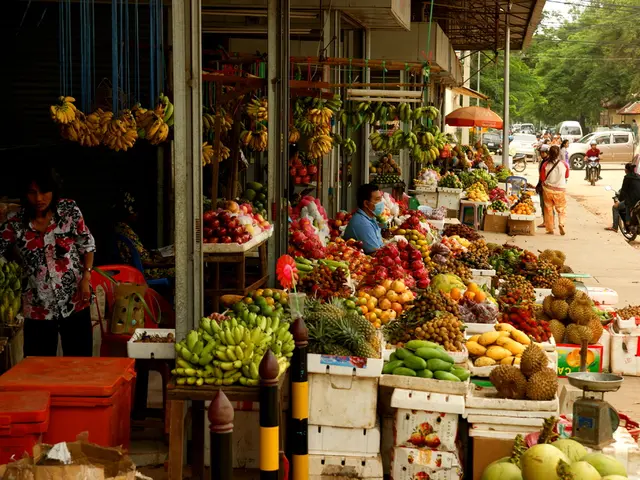Microplastics Pervade Environment, Imperil Marine Ecosystems and Humans
Harmful Presence: Microplastics and Their Detrimental Effects on Ocean Creatures and Human Wellness
Microplastics, minute plastic fragments typically less than five millimeters in size, permeate various environments, with alarming levels found worldwide. These particles emerge from breaking down larger plastic debris due to environmental factors such as sun exposure, wind, and oceanic currents. They also stem from products like microbeads in personal care items and synthetic clothing fibers shed during washing.
Common sources of microplastics include plastic bags, bottles, packaging materials, and a myriad of household items. They degrade into microplastics when exposed to mechanical actions, such as crushing and grinding, along with photodegradation. As a result, they often end up in waterways, where they pose a severe risk to marine ecosystems.
These microscopic particles infiltrate diverse habitats, ranging from the deepest parts of the ocean to remote areas distant from human activity. Waterborne transportation, atmospheric deposition, and soil runoff facilitate their widespread distribution. Recent research reveals that they can be discovered in a multitude of marine species, from plankton to larger fish, highlighting the need to investigate their impact on marine life.
Microplastics can have far-reaching implications for human health as they infiltrate the food chain through contaminated seafood consumption. As the plastic waste problem grows, understanding the origins and consequences of microplastics is crucial for addressing both environmental and health concerns. This knowledge is essential in developing strategies aimed at reducing plastic use and mitigating its ecological impact.
The Odyssey of Microplastics Through Marine Environments
Microplastics embark on their journey on land before finding their way into marine ecosystems. Their trip starts with their introduction into the environment primarily through urban center, agricultural area, and industrial site runoff, as well as improper waste disposal, synthetic fertilizer use, and the washing of synthetic textiles. Once these tiny particles enter waterways, they journey downstream towards the ocean.
Waste management practices play a crucial role in the proliferation of microplastics. Inadequately managed landfills can become sources of microplastic pollution, as decomposing waste releases smaller plastic fragments. Recycling processes that are not effective can offer fragmentation opportunities for enhancing the ubiquity of microplastics. Additionally, many wastewater treatment facilities lack the ability to filter out microplastics, enabling their escape into the marine environment.
Ocean currents and tidal actions also promote microplastic dispersion upon reaching the sea. These currents move microplastics over vast distances, allowing them to infiltrate various marine habitats, from coastlines to deep ocean areas. Marine life encounters these particles, potentially endangering their survival and health. The intricate ways microplastics traverse these habitats underscore the urgency for effective management strategies to alleviate their environmental impact.
Microplastics' Adverse Effects on Marine Life
Microplastics represent a significant threat to marine organisms across various ecosystems. Ingestion of these tiny particles by fish, crustaceans, and other marine creatures results in various harmful consequences. Studies have documented high ingestion rates among fish species such as the Atlantic mackerel and various shellfish species. This ingestion can trigger physical harm to the gastrointestinal tract, leading to decreased feeding, growth, and reproduction rates.
Furthermore, entanglement in plastic debris serves as another critical challenge faced by marine life. Species such as sea turtles, seabirds, and marine mammals often become ensnared in fishing nets or other plastic materials, resulting in injury or death. Seabirds, who may accidentally consume microplastics when foraging, can suffer from blockages in their digestive systems and harmful chemical exposure, negatively affecting their survival and nesting success.
The bioaccumulation potential of microplastics is substantial. When microplastics are consumed by smaller marine organisms, toxic substances absorbed on their surface can move up the food chain. As a result, top predators like fish, birds, and marine mammals can ingest these contaminated prey, ultimately endangering their health and disrupting ecosystem dynamics.
The Role of Microplastics in the Food Chain
Microplastics have become an increasing concern as a contaminant within marine ecosystems. These tiny fragments manifest in oceans through various routes, such as runoff from land, wastewater discharge, and atmospheric deposition. Once in the marine environment, they are ingested by a wide range of organisms, starting with microscopic plankton. As these foundational creatures consume microplastics, they introduce these pollutants into the food chain.
The implications of microplastic ingestion are profound. For instance, small fish and filter feeders, which consume plankton, may subsequently accumulate microplastics in their bodies. Biomagnification then occurs as organisms move up the food chain, leading to a gradual increase in microplastic concentration. Larger predators like predatory fish, seabirds, and marine mammals can consume significant quantities of smaller fish, which may contain substantial microplastic concentrations. As a consequence, these predators are exposed to not just microplastics, but also the myriad chemicals and toxins they often carry.
The bioaccumulation of microplastics raises significant concerns about biodiversity and ecosystem health. A diverse marine population is vital for maintaining ecological balance. Microplastics, however, threaten marine species at various trophic levels, potentially causing prey species declines and affecting the feeding, reproductive success, and overall health of higher predators.
Monitoring and understanding the pathways of microplastics through marine food webs are vital for assessing their impact on ecosystem dynamics and ensuring the long-term health of marine environments and communities dependent on them.
Human Exposure to Microplastics
Considerable concern surrounds microplastics and the potential impact on human health. One primary route of exposure for humans is through the consumption of seafood, with studies showing that various shellfish, fish, and other seafood species contain significant amounts of microplastics. Researchers estimate that an average person might consume up to 11,000 microplastic particles annually through seafood alone.
Another exposure pathway comes from drinking water. Both bottled and tap water have been discovered to harbor microplastic particles. A comprehensive assessment revealed their presence in over 80% of the bottled water tested, often originating from the bottling process itself. In addition, studies have shown that groundwater and surface waters are not immune and can become contaminated with microplastics, leading to chronic exposure over time.
Airborne microplastics also contribute to human exposure by becoming aerosolized through everyday activities, allowing individuals to consume them through inhalation. The implications of this exposure are still under investigation, but initial studies suggest the potential for respiratory issues and inflammation.
Addressing the presence of microplastics in our diet and environments is increasingly essential, necessitating consistent research efforts to determine the extent of human exposure, and advocating for cleaner, safer ecosystems for future generations.
Potential Health Impacts on Humans
Microplastics have been found in various environments, raising concern over the potential impact on human health. While specific human health effects are still under investigation, research indicates that these particles can carry harmful chemicals and pathogens. One concern is their potential toxicity, as certain additives used in plastic production like phthalates and bisphenol A (BPA) can leach into the human body upon exposure. These substances are known to disrupt endocrine functions and can lead to reproductive and developmental issues.
Inflammatory responses are another area of concern associated with microplastic ingestion. Research suggests that when ingested or inhaled, microplastics can provoke immune system reactions, potentially leading to localized inflammation that contributes to chronic health issues over time. The complex interaction between microplastics and the human body is still being studied, necessitating further examination to delineate the full spectrum of health risks.
While comprehensive epidemiological studies are limited, preliminary findings suggest associations between microplastic exposure and respiratory, cardiovascular, or gastrointestinal diseases. This research progresses, it becomes increasingly essential to explore these relationships to shed light on how microplastics affect human health.
Regulatory Responses and Mitigation Strategies
Recognizing the detrimental impact of microplastics, governments and international organizations have taken action through regulatory measures and mitigation strategies. One significant response includes the banning of certain plastic products that contribute heavily to the form of pollution. For example, several countries have restricted or banned the use of single-use plastics such as straws, bags, and cutlery.
Regulatory bodies have also been tasked with improving waste management practices to effectively contain plastic waste and minimize its fragmentation into smaller particles. Advances in recycling systems, stricter regulations on plastic production, and the promotion of environmentally friendly packaging solutions are key components of these strategies. In some jurisdictions, extended producer responsibility (EPR) policies have been implemented, requiring manufacturers to take responsibility for disposal and recycling of their products, incentivizing them to develop sustainable alternatives and encourage consumers to be conscious of their plastic use.
Innovative solutions are also emerging to combat microplastic pollution. Research into biodegradable materials provides a promising avenue for reducing reliance on traditional plastics. Additionally, technologies such as water filtration systems designed to capture microplastics from wastewater before they enter aquatic ecosystems are gaining traction. These systems play a critical role in protecting marine ecosystems and promoting public health by limiting human exposure to microplastic contamination.
Reducing microplastic pollution requires a holistic approach, combining regulatory frameworks, advanced technologies, and public engagement to effectively address their environmental and health impacts.
Public Awareness and Education
Educating the public about the risks of microplastics is crucial in addressing their environmental and health effects. Various educational initiatives targeting different demographics—from school children to adults—play a critical role in raising awareness about this omnipresent pollutant. By educating participants, organizations help them understand where microplastics originate, how they traverse marine ecosystems, the potential risks associated with their ingestion by marine organisms, and the resulting impact on human health through the food chain.
Community clean-up efforts also have a significant impact on removing existing microplastic pollution and fostering a sense of community responsibility for the environment. Local organizations often mobilize volunteers to clean beaches and waterways, allowing them to address current pollution levels and educate participants about the sources and dangers of plastic waste.
Advocacy campaigns serve to push for policy changes aimed at reducing plastic use. By leveraging social media platforms and community outreach, these initiatives disseminate information about microplastics, encouraging individuals to adopt sustainable practices and urge companies to embrace eco-friendly alternatives. Public pledges to reduce plastic usage, alongside the support of local businesses adopting sustainable practices, can significantly reduce microplastic distribution.
Overall, enhancing public awareness and education about microplastics is vital in addressing their detrimental effects on marine environments and human health. By equipping people with the knowledge and tools necessary to take action, society can collaborate to protect marine life and safeguard human health for future generations.
Conclusion and Call to Action
With the escalating concern over microplastics and their detrimental impacts on marine life and human health, it is crucial to take immediate action. Everyone plays a vital role in reducing microplastic pollution, from implementing responsible consumer choices and waste disposal methods to advocating for regulations that limit plastic production and direct investment in scientific research on microplastics. By collaborating within communities and governments, we can effectively combat this persistent environmental issue and protect the planet for future generations.
- Fitness enthusiasts should consider the environmental impact of their clothing choices, as synthetic fibers can contribute to the problem of microplastics in the environment.
- Investing in research and development of eco-friendly fabrics for the health and wellness industry could lead to significant reductions in microplastic pollution.
- As mental health becomes increasingly prioritized, it's essential to address the potential impacts of microplastics on neurological disorders and their links to environmental factors.
- In the realm of environmental science, collaboration between specialists in climate change, data and cloud computing, and technology is necessary for identifying and mitigating the widespread distribution of microplastics.
- The finance sector has a role to play in sustainable investments, supporting businesses that prioritize environmental and health concerns like the reduction of microplastic pollution.
- Lifestyle choices that minimize the consumption of seafood and bottled water can contribute to reducing personal exposure to microplastics and lower one's carbon footprint.
- Environmental organizations must further their efforts in educating the public about the sources and consequences of microplastics to promote more informed and eco-conscious choices.
- In the realm of sports, initiatives could be established to raise awareness about microplastics and their impact on marine ecosystems, encouraging athletes and teams to support cleaner environmental practices.
- Weather patterns and phenomena, such as hurricanes and storm surges, can impact microplastic distribution, making it essential for meteorologists to incorporate data on microplastic movement in their forecasts.
- Changes in farming practices, such as the reduction of synthetic fertilizers and the promotion of organic farming, can help decrease the release of microplastics into the environment.
- Travelers can contribute to the cause by supporting eco-friendly hotels and exploring destinations that prioritize sustainable practices, thereby minimizing their impact on marine ecosystems and overall health.
- The food and drink industry must consider the presence of microplastics in their supply chain, adopting stricter controls and more sustainable practices to protect consumer health and the environment.






